Warm Hearts and Hard Starts: A Reflection for World Refugee Day
BY ANNA FERGUSON | June 20, 2014
It was a nice break from the usual slogging through ESL and cultural orientation material. Today, instead of practicing introductions, writing letters and numbers or learning about job expectations, we gathered with the students we were tutoring and worked on an art project together.
With a few paper cut-outs, red, yellow and orange tissue paper, magnet strips, and some glue, my weekly service site group and the dozen or so students at the Southern Sudanese Community Association (SSCA) created something truly beautiful: autumn leaf magnets covered with balls of tissue paper, in various designs and patterns.
Every week my co-coordinator and I took a small group of Creighton students to the SSCA to help tutor refugees in ESL, cultural orientation and job training classes. Actually, all of these were usually combined into one class, taught by one very patient, very joyful volunteer, a recent college graduate named Ben.
Every week we practiced introducing ourselves and saying where we were from, wrote numbers and letters, learned job-necessary vocabulary and prepared for the citizenship test. Our success depended on the students’ ages, newness and levels in the class.
As someone who has never had to flee my country for safety reasons, and as someone who would probably struggle to find these students’ native countries on a map, it was uncomfortable for me, at first, to spend two hours working with people I could hardly communicate with, whose lives I barely understood.
Despite all of this, friendships were forged, not only between the students I tutored and myself, but also between themselves and one another. And the more I engaged with this community, the more I felt a part of it and felt a desire to be in solidarity with them.
It was amazing to watch the students build a community between themselves. They all came from different countries (mostly Burma and Bhutan) and were fluent in different languages, but they always found ways to help and joke with each other.
Humor, it appears, can travel across other languages. When someone mispronounced an English word, or when something that Ben was teaching sounded funny, they would all look at each other and laugh. If a fellow classmate was struggling to get something right, they would all chime in, either in imperfect English or in that student’s native language, to help explain it.
Despite the language barrier, there were always ways of connecting with the students. Laughter and joy are things we can understand no matter what language we speak. The students spoke through wide grins, bright eyes and a willingness to laugh at themselves as they stumbled over words. It was a language I could understand and return with my own laughter and smiles. Every so often I’d ask a student to teach me a word in their native language, which made me feel the most connected to these resilient, storied people.
They always impressed me. Day in and day out the students got themselves to class, often while balancing jobs. They had this determination that could not be quenched. All of them were older, but they had the hope and humor of elementary school students.
The more I got to know the students, the more I could envision what their lives were like before immigrating to the United States. It was hard to imagine spending almost my entire life in a country and suddenly having to flee it for another because of violence and corruption. At these students’ ages, learning a new language was hard, being forced to adapt to a new culture was scary, and not knowing anyone was terrifying.
Yet these refugees never gave up. They never gave up the love and pride they had for their home countries, nor did they give up their project of making this country their home. To get to be a part of that project did so much more for me than I probably did for them. As I taught the students, I learned from them about a world beyond my own, a world that challenged me to love and be in greater solidarity with its people.
Even with all of this, it was still nice to take a break from the hard work and just have fun by doing an art project together. I was astounded by the woman I partnered with for the project. Every time I finished one of my little leaf magnets, I’d look down at it in pride, thinking, Wow, this turned out better than I thought it would. Then I’d look at my partner’s leaves and admire her creativity. I could never have come up with the kind of designs she had on her leaves. They were beautiful.
At the end of the class, as I gathered my leaves and said goodbye to the students, my partner took one of my leaves—my favorite of the three—and then took my hand, looked in my eyes and smiled. When she let go, one of her beautiful leaves was in my hand. A way to remember each other, a symbol of solidarity, an icon of her warm heart and the hard start she was overcoming.
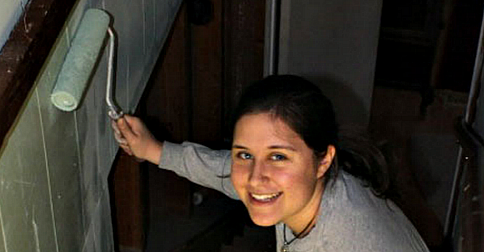
Anna Ferguson is a junior studying theology and journalism at Creighton University. She is originally from Wheaton, IL, which is a suburb just West of Chicago, and, yes, a PROUD Cubs fan! The oldest of six girls, she comes from a lively family who instilled in her a desire to serve the less fortunate and learn as much as she can about the world around her. She came into Creighton with the dream of becoming a big reporter one day, but the Ignatian Family Teach-In for Justice, the service trip she attended, the volunteering she participated in, and her theology class convinced her otherwise throughout her freshman year. She couldn’t ignore her passion for service and love for the Catholic faith, so she tacked on a theology major, and dove deeper into service, social justice, and advocacy through her job in the Creighton Center for Service and Justice. Throughout these experiences, she realized that she wanted to use her writing skills for so much more than a big newspaper job. Today, her dream is to be a kind of missionary-journalist, engaging the world in the “gritty reality” around them (to borrow from Fr. Peter Hans Kolvenbach). (Follow Anna on Twitter @AnnaFeguson832).

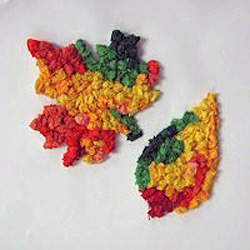

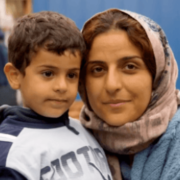
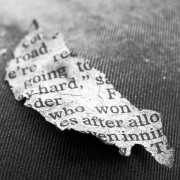
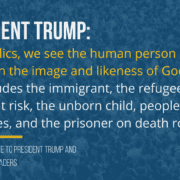
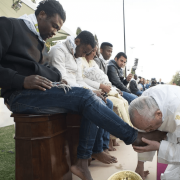
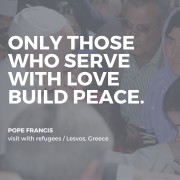




Leave a Reply
Want to join the discussion?Feel free to contribute!